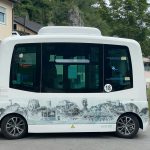The emergence of electric vehicles (EVs) marks a significant turning point in the automotive industry, symbolizing a move towards more sustainable and environmentally friendly transportation options. Unlike conventional vehicles that rely on internal combustion engines, EVs are powered by electricity, offering a cleaner alternative to fossil fuels. This article provides an in-depth look at how electric vehicles function, exploring their key components, the science behind their operation, and the broader implications for the future of transportation.
The Core Components of Electric Vehicles
Understanding how electric vehicles work requires a deep dive into their essential components. Unlike traditional cars, which are characterized by their complex internal combustion engines, EVs have a more straightforward yet sophisticated setup. The core components include the electric motor, battery pack, inverter, onboard charger, and regenerative braking system.
Electric Motor
The electric motor is the heart of an electric vehicle, responsible for converting electrical energy into mechanical energy. This conversion process is remarkably efficient, with electric motors achieving efficiency rates of up to 90% or more, compared to the 20-30% efficiency of typical gasoline engines. The immediate availability of torque from electric motors also means that EVs can accelerate quickly from a standstill, offering a responsive driving experience.
Battery Pack
The battery pack in an EV stores the electrical energy needed to power the motor. Lithium-ion batteries are predominantly used due to their high energy density, relatively light weight, and ability to retain charge. The battery’s capacity, measured in kilowatt-hours (kWh), is a crucial determinant of the vehicle’s range—the more kilowatt-hours, the longer the distance the vehicle can travel on a single charge.
Inverter
The inverter’s role is to convert the direct current (DC) electricity stored in the battery into alternating current (AC), which is required to drive the electric motor. This component is vital for the efficient operation of the vehicle, as it allows for precise control of the motor’s speed and torque, enhancing the driving experience and the vehicle’s energy efficiency.
Onboard Charger
The onboard charger is a device that facilitates the conversion of AC electricity from the charging station or home outlet into DC electricity, which can be stored in the battery. The efficiency and speed of the onboard charger are key factors in determining how quickly the vehicle can be charged and made ready for use.
Regenerative Braking
Regenerative braking is a distinctive feature of EVs, allowing them to recover energy that would otherwise be lost during braking. Instead of using traditional brakes to slow down, the electric motor runs in reverse during deceleration, transforming kinetic energy into electrical energy, which is then stored in the battery. This system not only extends the vehicle’s range but also contributes to the overall efficiency of the vehicle.
Charging Infrastructure
A crucial aspect of electric vehicle technology is the infrastructure for charging. There are three primary types of charging: Level 1, Level 2, and DC fast charging. Level 1 charging uses a standard household outlet and offers the slowest charging speed, making it suitable for overnight use. Level 2 charging requires a special installation but provides a much faster charging rate, making it ideal for home and public use. DC fast charging represents the quickest charging option, capable of adding significant range to an EV in a matter of minutes, although it’s less commonly available than Level 1 and Level 2 stations.
Environmental Benefits
One of the primary advantages of electric vehicles is their environmental benefit. EVs produce zero tailpipe emissions, significantly reducing the total greenhouse gas and pollutant emissions associated with road transport. When powered by renewable energy sources, the benefits are even more pronounced, offering a nearly emission-free transportation solution.
Technological Advancements and Future Prospects
The future of electric vehicles is bright, with continuous advancements in battery technology, motor efficiency, and charging infrastructure. Innovations such as solid-state batteries promise to offer higher energy densities, faster charging times, and longer lifespans, potentially addressing current limitations related to range and charging infrastructure.
Challenges and Considerations
Despite their advantages, electric vehicles face challenges, including higher upfront costs compared to traditional vehicles, concerns about battery life and disposal, and the need for a more extensive and reliable charging network. Overcoming these challenges is essential for the widespread adoption of EVs and will require coordinated efforts from governments, industry, and consumers.
Conclusion
Electric vehicles represent a transformative technology in the realm of transportation, offering a cleaner, more sustainable alternative to internal combustion engine vehicles. By understanding how EVs work, consumers can make informed decisions about their transportation choices, contributing to a greener future. As the technology evolves and adoption increases, electric vehicles will play a crucial role in reducing global carbon emissions and shaping the future of mobility.












